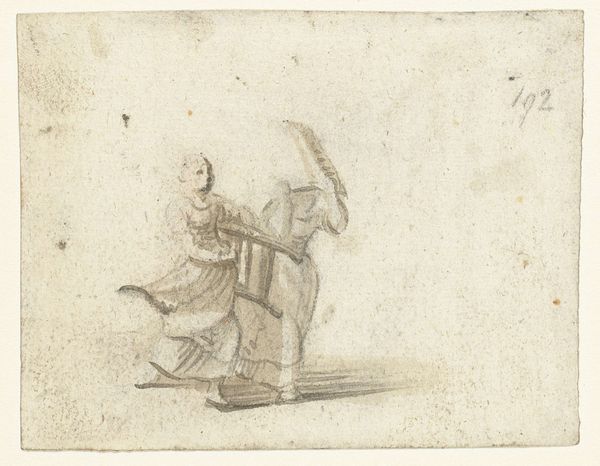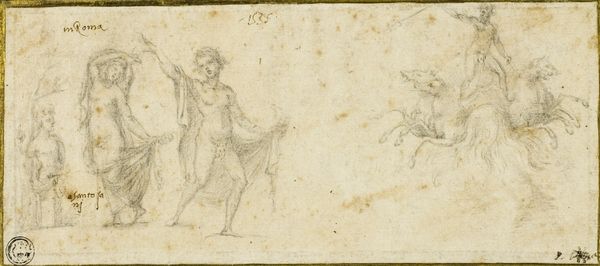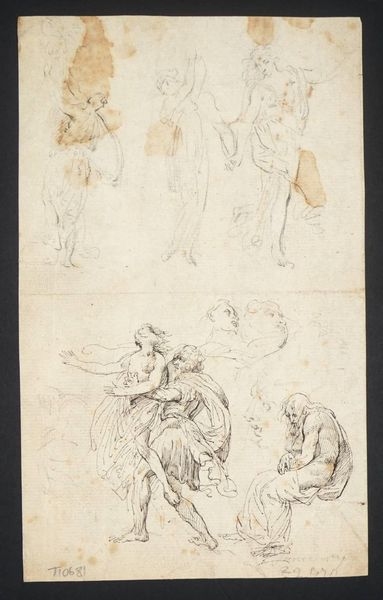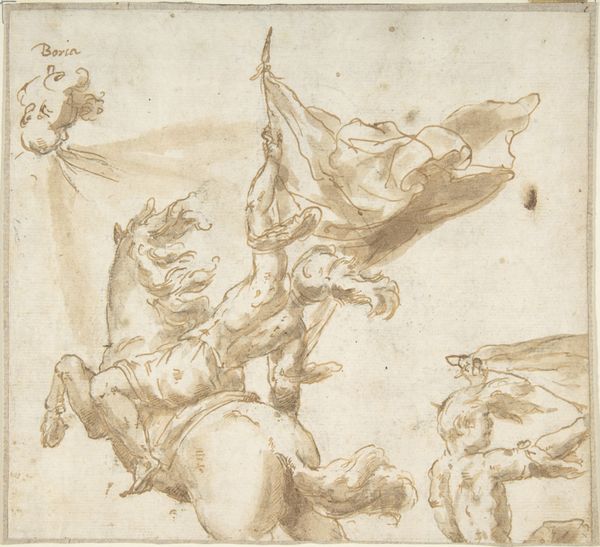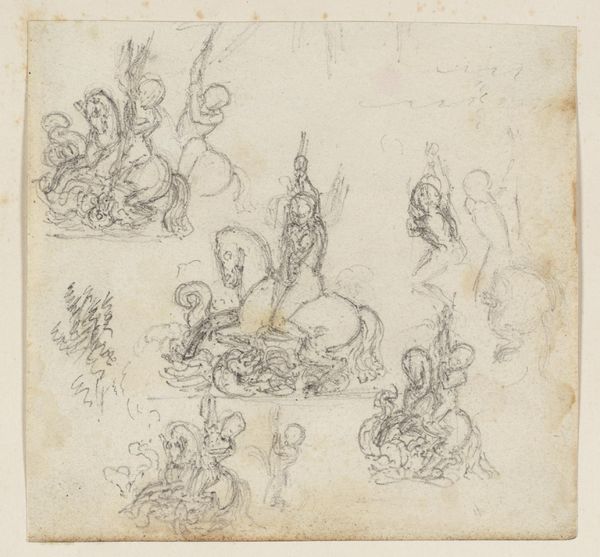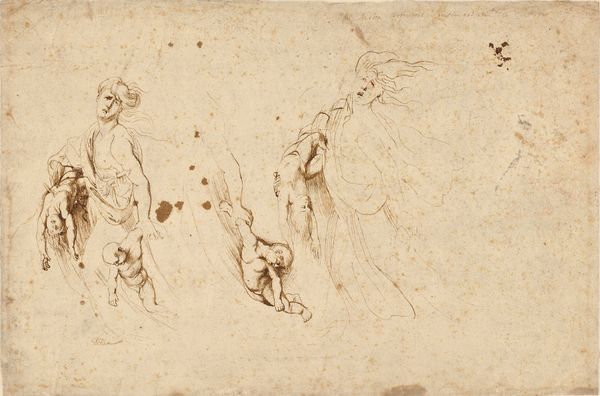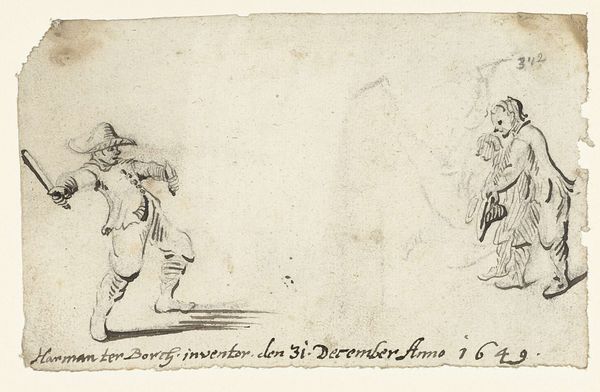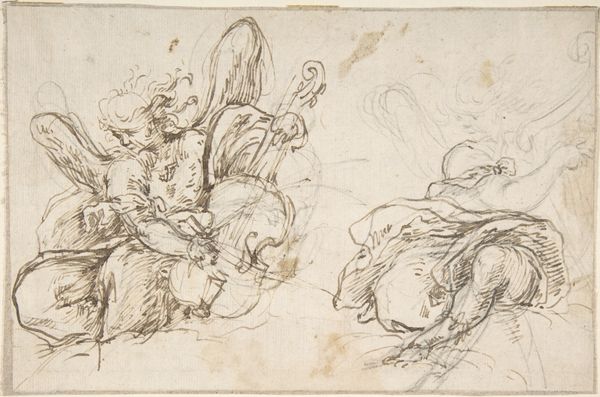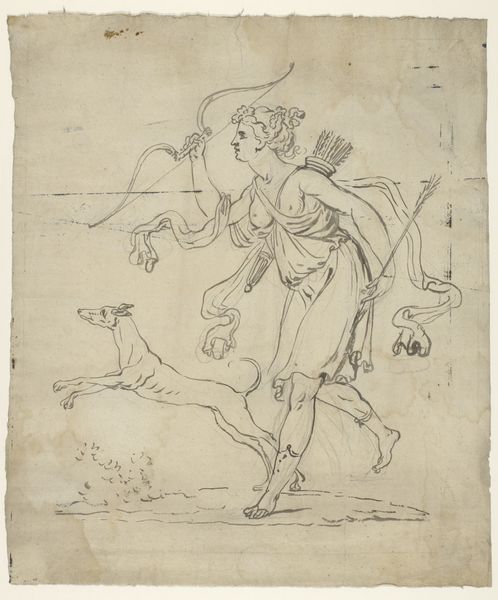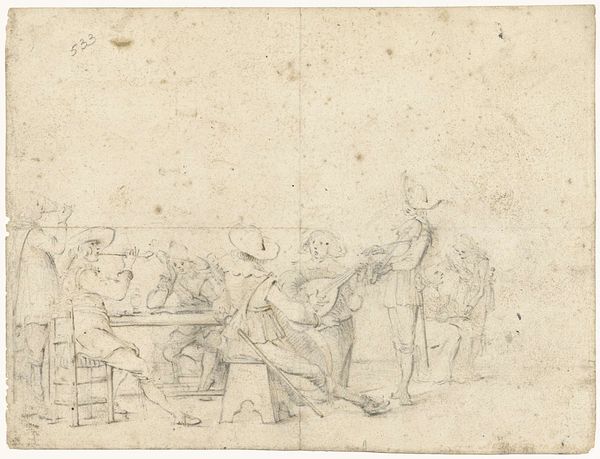
drawing, paper, ink
#
portrait
#
drawing
#
narrative-art
#
baroque
#
figuration
#
paper
#
ink
#
genre-painting
Dimensions: height 111 mm, width 90 mm
Copyright: Rijks Museum: Open Domain
Gerard ter Borch the Elder created this drawing, Haman en Mordechai, in 1615. The scene, rendered with delicate pen strokes, captures a dramatic moment with a clear emphasis on line and form. Note how Borch uses the contrast between the figures: Haman, regal on horseback, and Mordechai, who gestures outwards. This contrast isn't just narrative but structural, setting up a visual tension that pulls the viewer into the scene. The artist’s choice to focus on line rather than elaborate shading directs our attention to the underlying structure of the composition, highlighting its symbolic weight. The drawing presents a study in semiotics, where each element contributes to a larger narrative. Borch uses visual signs – the horse as a symbol of power, the characters' garments as markers of status – that would have resonated with the cultural codes of his time. These weren't merely illustrations, but complex statements about power, perception, and representation in society.
Comments
No comments
Be the first to comment and join the conversation on the ultimate creative platform.
